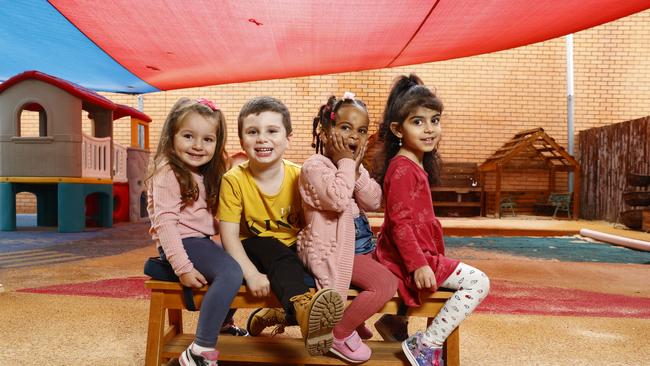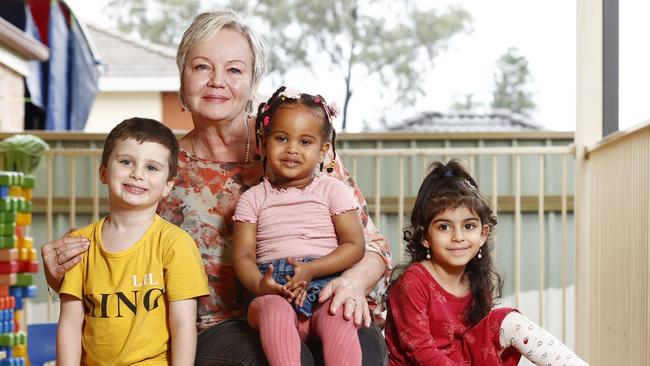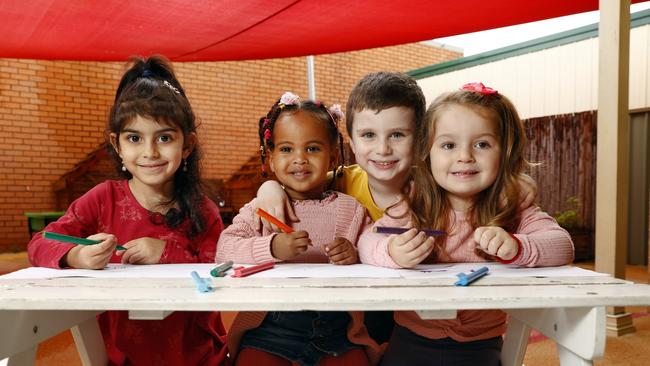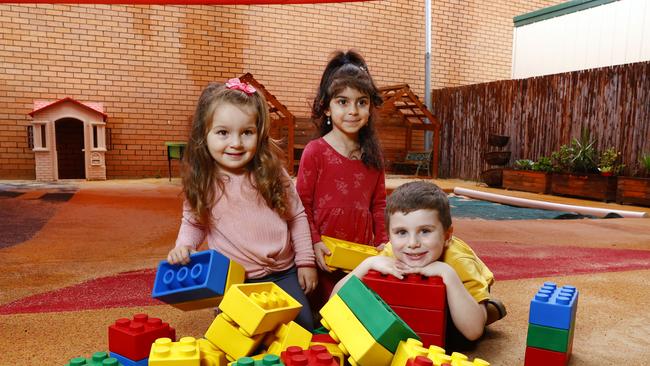Liverpool and Fairfield among the worst Sydney suburbs for childcare access
There are more than three kids for every childcare place across Liverpool and Fairfield, forcing young families to make hard career decisions.
Liverpool
Don't miss out on the headlines from Liverpool. Followed categories will be added to My News.
Liverpool and Fairfield have been classified as “childcare deserts” following a new research report, placing them in the top five worst suburbs for access to childcare in Sydney.
The report from Victoria University-affiliated Mitchell Institute revealed that some 3 million people in NSW are living in what it qualifies as “childcare deserts”, which are places where there are more than three kids for every childcare place available.

The geographical divide is stark, with suburbs in the inner city having a range of childcare options, while parents in the southwest and western suburbs, along with regional NSW, have to compete for very few places.
The report’s lead author, Dr Peter Hurley, argues that the privatised childcare sector isn’t opening centres where the demand is highest, or where the benefits of early education will be most felt, like southwest Sydney.
Instead, they are being opened where operators can charge the highest fees, according to their data. That means inner city Sydney and the inner west.
“More competition in these areas isn’t driving down prices. The incentive is for providers to go where they can make the most profit,” said Dr Hurley.
Hannah Matthews, a policy fellow at the Mitchell Institute, explains how this plays out for parents in Fairfield and Liverpool, and feeds into workforce participation for women, who typically take up the unpaid labour of child rearing.
“For families living there, access to childcare will be really tricky. There will be services but not enough places, then you’re looking at tough decisions for families,” Ms Matthews said.
“Where is the next place located? How long is that drive? Does that work with commute times for work?”
One childcare centre in Liverpool, Planet Kindy, has no places for kids until next year at the earliest, and 31 families on the waiting list.
The owner of the business, Zuzana Vazan, has been running it for 16 years, and said things have changed significantly since they’ve opened.
“Liverpool has so many young families, lots of high rise buildings,” Ms Vazan said.
“We’ve always been full but now there is a much bigger demand which we can’t fill.”

For Bojan and Sandra Stegnjaic, who have a four-year old currently attending Planet Kindy, it’s been a struggle waiting for their one-and-a-half year old to have a place.
Ms Stegnjaic has a job with Coles, and is currently on maternity leave, while Mr Stegnjaic owns his own tiling business.
Mr Stegnjaic said they “got right in” for their first child, but have already been waiting three months for their youngest child.
“She had two years of maternity leave, but now she needs to go back to work if she wants to keep the job,” Mr Stegnjaic said.

At First Grammar in Fairfield, places are extremely hard to come by for 0-3 year olds, though spaces open up for older kids.
It’s a similar story in many centres, according to Dr Hurley, as kids under three need higher levels of supervision, and higher mandated ratios of childcare workers to children.
Another childcare provider in Fairfield — which did not want to be named in this article — had a waitlist of 400, including some 160 families with one child already in their centres.
Other southwest suburbs, including Bringelly, Green Valley and Bankstown had similar ratios of kids under five to childcare places available, but did not rank as ‘deserts’ according to the report’s methodology.
There are lower levels of workforce participation for women with children under five in areas they classify as childcare deserts, with the lack of options reinforcing a feedback loop, according to the researchers.
“Lower levels of workforce participation will affect levels of childcare, but it could work the other way, leading them to choose to not participate in the workforce or as much as they’d like while their children are young,” Ms Matthews said.
But parents in southwest Sydney are relatively better positioned than parents in regional areas.
The places with the least options for parents are Broken Hill and Far West NSW, with an average of 7-8 children under the age of five for every one childcare place and the Upper Hunter, with 5-6 children for every one childcare place.
Dr Hurley said that in regional areas “People are talking about getting their child on waiting lists before they even get pregnant”.
Compare that to the Sydney suburbs classified as ‘oases’ in the report.
In Sydney’s inner city, there are 1.57 children under five for every childcare place.
Chatswood and Lane Cove on the north side of the harbour boast 1.73 children for every childcare place, and for families in Kur-Ring-Gai, there are 1.85 children under five for each child care place.

In Sydney’s innerwest suburbs of Marrickville, Sydenham, and Petersham, there are roughly two children for every one child care place.
The report argues for universal access to early childcare, and that all parents should have the ability to send their children there, if they so choose.
While it would cost money to implement, the report authors point to research which shows that the increased costs would be offset by taxes paid by women able to stay in, or re-enter the workforce instead of taking on unpaid care roles.
But availability issues can’t be solved solely with subsidies, according to Dr Hurley, as he argues for universal access to guide the design of the childcare system.
“Changing the sticker price won’t affect all those structural issues,” Dr Hurley said.
“If there’s already a three-year waitlist, how’s a price change going to help?”
As the report puts it, “There is a need for new approaches to ensure all families have access to the early learning and care that they need to help children thrive.”

How they calculated it
The report uses data from Australian Children’s Education and Care Quality Authority (ACECQA), which rates the more than 8,700 childcare centres that operate nationally.
The report’s authors decided on using data for childcare places for 0-4 year olds, only including centres open more than forty hours per week, and excluding children who attend preschool.
From the ACECQA data, that equalled out to 602,000 places nationally for 1.52 million children.
This results in a ratio of about 0.396 childcare places per child, if childcare was equally divided across the country. The authors classify childcare deserts as places where there are more than three kids for every childcare place available. That also equals a score of 0.33 or lower.
By comparison, an oasis is a place that scores 0.6 or higher, meaning there are 0.6 places for every child in the area, significantly above the national average.
The authors explain that the score of 0.6 equals out to three full days of childcare available for every child, every week, meeting the bar of ‘universal access’.
To calculate how many childcare options an individual ABS-defined statistical region had, travel times were used as a metric instead of distance, LGA, or suburb, to more fairly consider how people move in regional areas, according Dr Hurley.
For example, two opposite ends of a peninsula might be within 10km, but an hour drive away.
To calculate the score of each region, the team used a baseline of a 10 minute drive for metropolitan Sydney, and a 20 minute drive for regional areas, then weighted the numbers higher or lower depending on whether the childcare options were within the travel time.
So a region with multiple options that were 2.5 minutes away would score higher than a region with the same options that were 10 minutes or more away. That also allows for a fairer comparison between two households in opposite ends of the same small regional town, and equalises the difference in convenience.
Because the authors have chosen to weigh the childcare places available against travel times, the scores aren’t straightforward comparisons of availability, they also take into account convenience, which the authors believe is a huge factor in parent’s childcare choices.
It more fairly weighs up the issue of accessibility, according to Dr Hurley.



